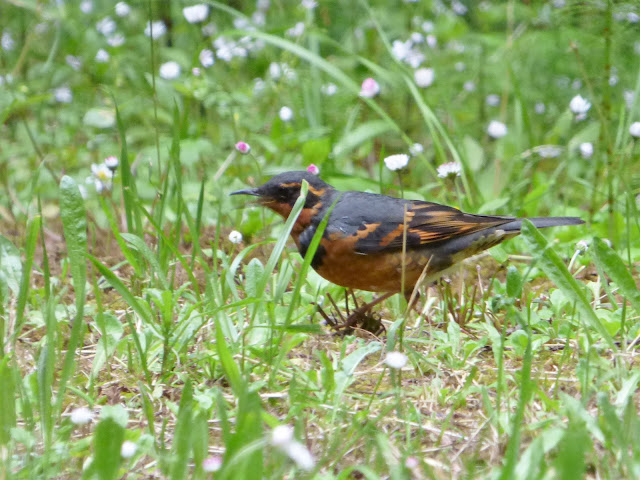In the 1960s there was an effort to select a place in the northern coast ranges to become Redwood National Park. Mill Creek, east of Crescent City, was considered, but in the end Redwood Creek to the south became the focus of the new national park, established in 1968. It was the death knell for the old growth Coast Redwoods in Mill Creek. From 1968 to 2002, tens of thousands of acres were logged, and there were only a few hundred acres left. At that time, the stricken drainage was purchased to become a huge addition to Del Norte Coast Redwoods State Park. The purpose was to protect the redwood forests downstream in Jedidiah Smith State Park. The land will eventually recover and the redwoods may very well return, but not for many human generations.
Still, there is some fine second-growth forest in the park addition, just not redwoods. That's where we spent two nights last week on our journey to coastal California and Oregon. Mill Creek Campground was a beautiful and quiet place to stay (the first night anyway; there were rude drunks next door the second night).
One thing about birding in a thick forest is that it really requires a good sense of hearing, because the birds are well-hidden in the foliage. And I don't do well with bird calls for a number of reasons. Just the same, we saw some interesting birds, and today's bird was one of them, making a first appearance on this blog: a Varied Thrush (Ixoreus naevius). They are seen back home on occasion, but I haven't been that lucky. I'd previously seen only one before, in a rest area in northern Oregon a few years ago. But as we left the campground, Mrs. Geotripper pointed out the bird and wondered what it was. The colors are distinctive, so I was fumbling with a camera (hers, as it turned out), and finally got a couple of shots before it ran off.
The Varied Thrush is a true denizen of the deep forest. It's also a bird of the west, found mainly in the Coast Ranges of Canada and the Cascades. The loss of the western forests has been detrimental for the thrush. More than 90% of the original redwood forests are gone, and with them, something close to 70-80% of the thrushes are gone as well, at least since 1966. The rehabilitation of the forests will help their populations to recover.


No comments:
Post a Comment